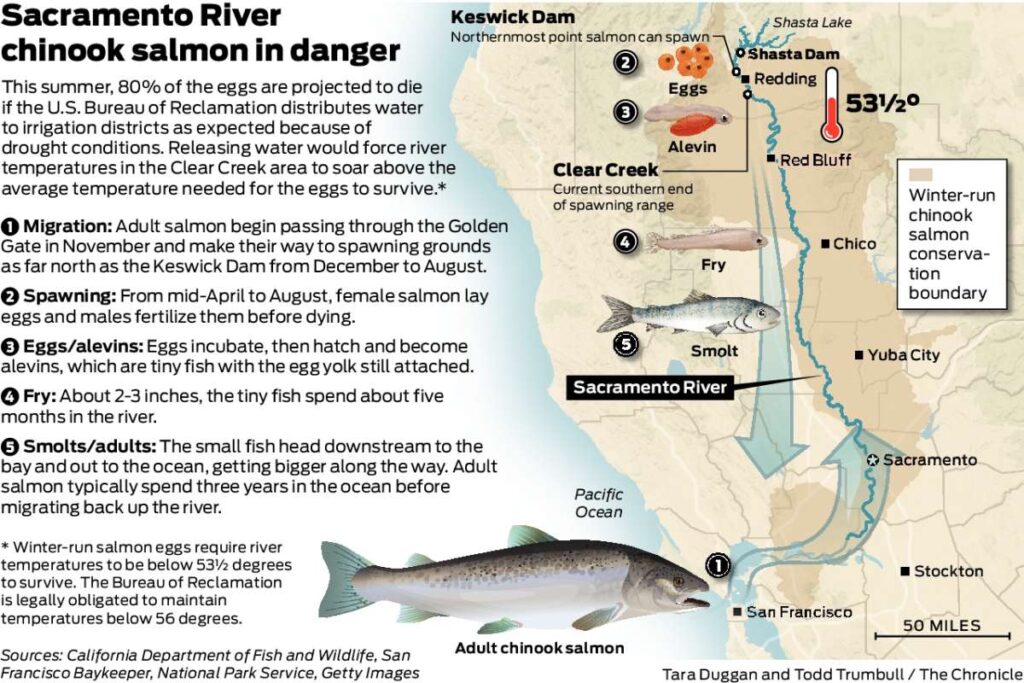By Tara Duggan Via sfchronicle.com

An entire run of endangered winter-run chinook salmon, as well as the fall-run salmon that make up the core of the California fishery, are in danger of being wiped out this year if the U.S. Bureau of Reclamation keeps diverting water to farmers at its current rate.
With state water resources constrained by the extreme drought, that’s the alarm that environmental, fishing and tribal groups are sounding after reports show the Sacramento River will reach dangerous temperatures during spawning season, based on federal scientific scenarios that analyze the bureau’s planned water releases. They warn of a massive die-off as bad as during the last drought, when 95% of winter-run chinook salmon eggsand young fish were wiped out in 2014 and 2015.
“I see in this a very clear need for urgent action to stave off disaster in pushing a species that is already trending toward extinction even closer,” said Rachel Zwillinger, water policy adviser for the nonprofit Defenders of Wildlife. “We haven’t seen the type of urgency that the situation demands from the agencies.”
The bureau is legally obligated to maintain temperatures below 56 degrees in the upper part of the Sacramento River, yet one scenario from the National Marine Fisheries Service, a division of the National Oceanic and Atmospheric Administration, projects it going over that for several months during the critical spawning and incubation period for both winter- and fall-run chinook. The scenario shows that high temperatures would wipe out 80% of the endangered winter-run salmon eggs, and ecologists say few survivors would make it to adulthood.
The State Water Resources Control Board is awaiting a final plan from the bureau, due this month, detailing how it intends to maintain that temperature. The board will have 10 days to approve or reject the plan. Meanwhile, the bureau continues releasing water.
Board chair Joaquin Esquivel said in a statement, “As we all recall in the last drought, with such dry hydrology comes a precarious balancing act of human health, and ecological and economic impacts. Collaborating with state and federal project operators and fish and wildlife agencies, and in cooperation with stakeholders, the state water board is working to quickly understand deteriorating hydrologic conditions and develop ways to comprehensively assess and respond to the unprecedented conditions California is facing.”
After Gov. Gavin Newsom expanded his drought emergency to 41 of the state’s 58 counties Monday, it is unlikely that the state’s competing interests — farms, fish and cities — will get all the water they need this year. As climate change brings more severe droughts, water managers will have an increasingly difficult time balancing demands. But critics say the state has long prioritized agriculture, which typically receives 40% of the state’s water while accounting for only 3% of its gross domestic product.
“The state has the authority to strike compromise and balance how water is used,” John McManus, president of the Golden Gate Salmon Association, which represents Bay Area fishermen, said. “In the last drought, the state failed to exercise that authority adequately to protect salmon stocks.”
